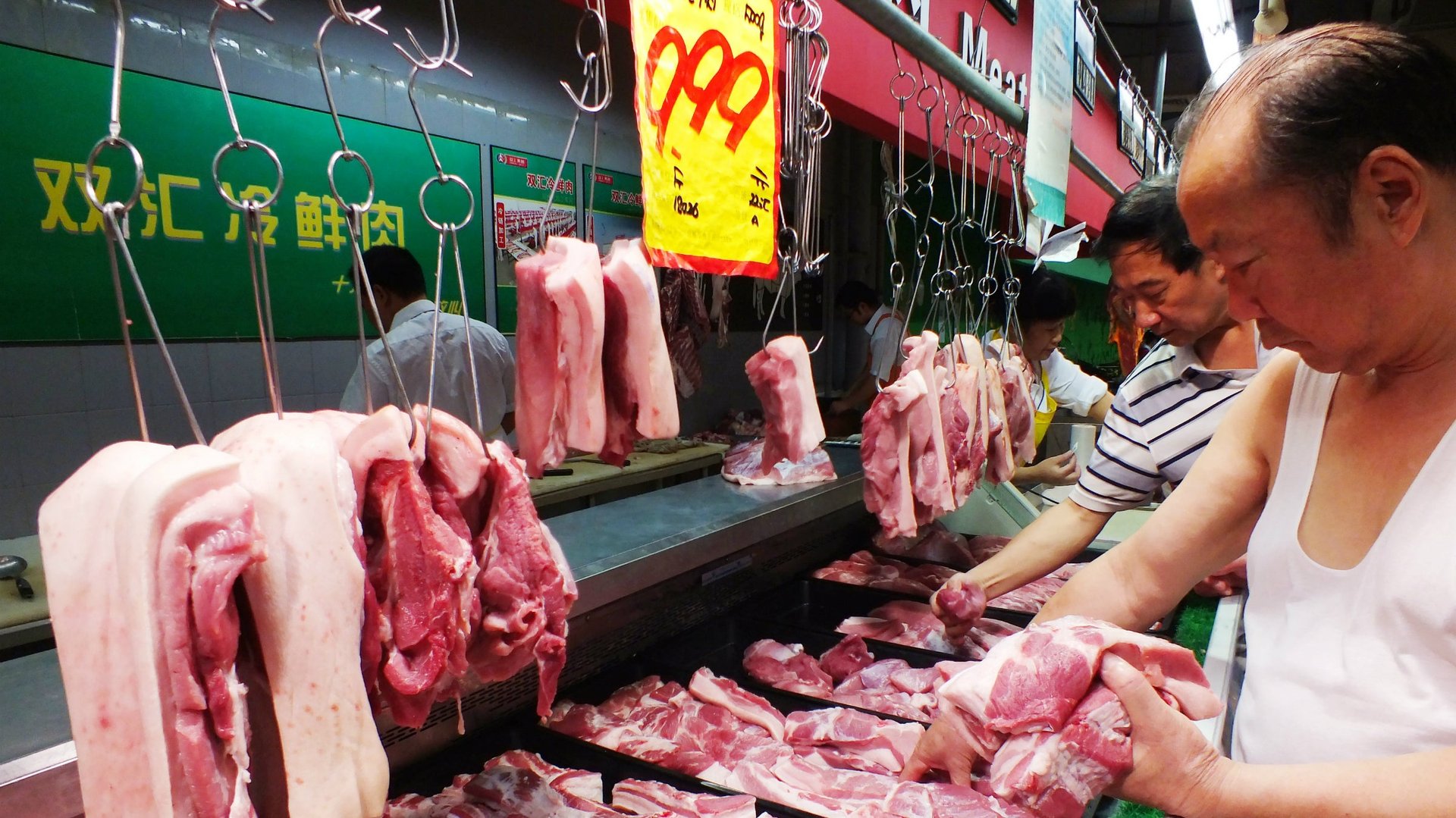China’s short-term inflation problem is partly a long-term food supply problem
Chinese inflation hit a four-month high in June, worrying investors who fear that a central bank stimulus is now even less likely. Ordinary citizens are no better off—the biggest factor influencing the rise in prices was food, the one consumer product most associated with an unhappy populace.


Chinese inflation hit a four-month high in June, worrying investors who fear that a central bank stimulus is now even less likely. Ordinary citizens are no better off—the biggest factor influencing the rise in prices was food, the one consumer product most associated with an unhappy populace.
Food has long been a big influence on the country’s inflation figures. In June, prices rose 4.9% from a year earlier, compared with a 3.2% rise in May, easily outpacing the 2.7% rise in overall consumer prices. The cost of food can be volatile because it is influenced by uncontrollable short-term factors like the weather, but there is a undeniable long-term trend at work as well: A massive wave of urbanization and elimination of farmland have squeezed supply of products like pork, sending prices steadily upward.
China’s central bank now has a difficult decision. The country’s gigantic manufacturing sector is flagging—producer prices fell 2.7%, the 16th consecutive decline, due to weak demand and overcapacity. The People’s Bank could inject money into the system or lower interest rates to encourage spending, but it is leery of further inflating the property bubble or encouraging the growth of the shadow banking. If Beijing does nothing and food prices rise further amid a slowing economy, it risks incurring further social unrest—not so far-fetched in a country that experienced horrific famine only a few generations hence.
At its most basic level, China’s food problem is not about inflation—it is about building a sustainable agricultural sector. Due to a shortage of arable land, the country relies heavily on imports to feed its population and livestock. As we reported on Monday, Beijing is not afraid to wade into a market like infant formula that it judges needs “industry consolidation.” But there’s a lot to do. The OECD and UN reckon that China should be able to become almost self-sufficient for wheat and rice in the next 10 years. That should bring some food prices down, but it won’t satisfy China’s massive demand for pork. And even if there’s enough food, the other challenge is making sure it’s safe to eat.